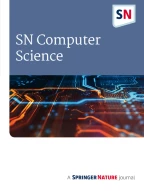Abstract
Detecting fraudulent activities is a major worry for businesses and financial organizations because they can result in significant financial losses and reputational harm. Traditional fraud detection a method frequently depend on present rules and patterns that skilled scammer can easily circumvent. Machine learning and deep learning algorithms have surfaced as promising methods for detecting fraud in order to handle this problem. Authors present a thorough overview of the most recent ML and DL techniques for fraud identification in this article. These approaches are classified based on their fundamental tactics, which include supervised learning, unsupervised learning, and reinforcement learning. We review recent developments in each area, as well as their strengths and weaknesses. Additionally, we draw attention to some of the major problems with imbalanced datasets, adversarial assaults, and the interpretability of models as well as other important research tasks and difficulties in fraud detection. We also stress the value of feature science and data pre-processing techniques in enhancing the effectiveness of scam detection systems. Finally, we show a case study on the use of DL and ML techniques in the financial sector for fraud detection. Authors show how these algorithms can successfully identify fraudulent transactions, minimize false positives, and keep high precision and scalability. The overall aim of this article is to provide a comprehensive evaluation of the most cutting-edge ML and DL techniques for fraud identification and to shed light on potential future paths for this field of study.
Similar content being viewed by others
Explore related subjects
Discover the latest articles, news and stories from top researchers in related subjects.Data Availability
Available to all researchers.
Change history
20 August 2024
A Correction to this paper has been published: https://doi.org/10.1007/s42979-024-03236-y
References
Lakshmi SVSS, Kavilla SD. Machine learning for credit card fraud detection system. Int J Appl Eng Res. 2018;13(24): PP16819–16824:1–3.
Kumar V, Kumar V, Vijayshankar A, Kumar P. Credit card fraud detection using machine learning algorithms. Int Eng Res Technol (IJERT). 2020;9(7):2–4.
Khan S, Sanovar S, Kumar H. Credit card fraud detection using machine learning. Int J Sci Res Publ (IJSRP) 11–6
Benchaji I, Douzi S, Ouahidil BE, Jaafari J. Enhanced credit card fraud detection based on attention mechanism and LSTM deep model. J Big Data. 2021;8(151):1–21.
Leo B. Bagging predictors. Mach Learn. 1996;24(2):123–40.
Meng C, Zhou L, Liu B. A case study in credit fraud detection with SMOTE and XGBoost. J Phys Conf Ser. 2020;1601(5): 052016.
Bahnsen AC, Stojanovic A, Aouada D, Ottersten B. Cost sensitive credit card fraud detection using Bayes minimum risk, 2013. In: 12th international conference on machine learning and applications; 2013. vol. 1, pp. 333–338.
Awoyemi JO, Adetunmbi AO, Oluwadare SA. Credit card fraud detection using machine learning techniques: a comparative analysi. In: 2017 international conference on computing networking and informatics (ICCNI); 2017. pp. 1–9.
Adewumi AO, Akinyelu AA. A survey of machine-learning and nature-inspired based credit card fraud detection techniques. Int J Syst Assur Eng Manag. 2017;8(2):937–53.
Chaudhary A, Tiwari VN, Kumar A. A new intrusion detection system based on soft computing techniques using neuro-fuzzy classifier for packet dropping attack in manets. Int J Netw Secur. 2016;18(3):514–22.
Nguyen TT, Tahir H, Abdelrazek M, Babar A. Deep learning methods for credit card fraud detection. arXiv:abs/2012.03754 (2020).
Sohony I, Pratap R, Nambiar U. Ensemble learning for credit card fraud detection. In: ACM India joint international conference on data science and management of data; 2018. pp. 289–294.
Sakharova I. Payment card fraud: challenges and solutions. In: 2012 IEEE international conference on intelligence and security informatics; 2012. pp. 227–234.
Douzi Benchaji S, Ouahidi BE. Using genetic algorithm to improve classification of imbalanced datasets for credit card fraud detection. In: International conference on advanced information technology services and systems; 2018. pp. 220–229.
Dawar I, Kumar N, Kaur G, Chaturvedi S, Bhardwaj A, Rana M. Supervised learning methods for identifying credit card fraud. In: 2023 international conference on innovative data communication technologies and application (ICIDCA); 2023. pp.791–796.
Jose S, Devassy D, Antony AM. Detection of credit card fraud using resampling and boosting technique. In: 2023 advanced computing and communication technologies for high performance applications (ACCTHPA); 2023. pp.1–8.
Devika M, Kishan SR, Manohar LS, Vijaya N. Credit card fraud detection using logistic regression. In: 2022 second international conference on advanced technologies in intelligent control, environment, computing & communication engineering; 2022. pp. 1–6.
Own RM, Salem SA, Mohamed AE. TCCFD: an efficient tree-based framework for credit card fraud detection. In: 2021 16th international conference on computer engineering and systems (ICCES); 2021. pp. 1–6.
Chaudhary B, Singh K. Pseudonym generation using genetic algorithm in vehicular ad hoc networks. J Discrete Math Sci Cryptogr. 2019;22(4):661–77.
Funding
The authors declare no funding received or requested from organization.
Author information
Authors and Affiliations
Contributions
All authors contributed equally.
Corresponding author
Ethics declarations
Conflicts of Interest
The authors declare no conflicts of interest.
Research Involving Human and/or Animals
No Human and/or Animals used in research.
Additional information
Publisher's Note
Springer Nature remains neutral with regard to jurisdictional claims in published maps and institutional affiliations.
This article is part of the topical collection “Security for Communication and Computing Application” guest edited by Karan Singh, Ali Ahmadian, Ahmed Mohamed Aziz Ismail, R S Yadav, Md. Akbar Hossain, D. K. Lobiyal, Mohamed Abdel-Basset, Soheil Salahshour, Anura P. Jayasumana, Satya P. Singh, Walid Osamy, Mehdi Salimi and Norazak Senu.
The original online version of this article was revised due to incorrect abstract in the online version. Now, it has been corrected.
Rights and permissions
Springer Nature or its licensor (e.g. a society or other partner) holds exclusive rights to this article under a publishing agreement with the author(s) or other rightsholder(s); author self-archiving of the accepted manuscript version of this article is solely governed by the terms of such publishing agreement and applicable law.
About this article
Cite this article
Gandhar, A., Gupta, K., Pandey, A.K. et al. Fraud Detection Using Machine Learning and Deep Learning. SN COMPUT. SCI. 5, 453 (2024). https://doi.org/10.1007/s42979-024-02772-x
Received:
Accepted:
Published:
DOI: https://doi.org/10.1007/s42979-024-02772-x
